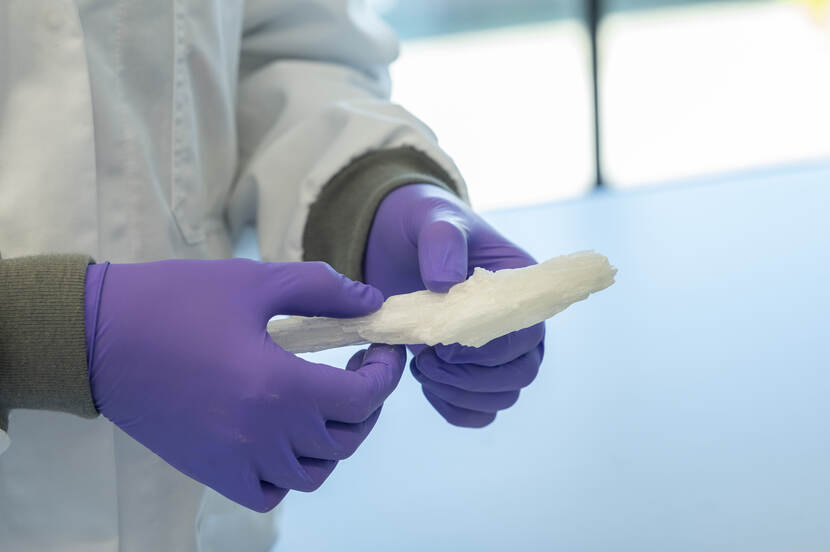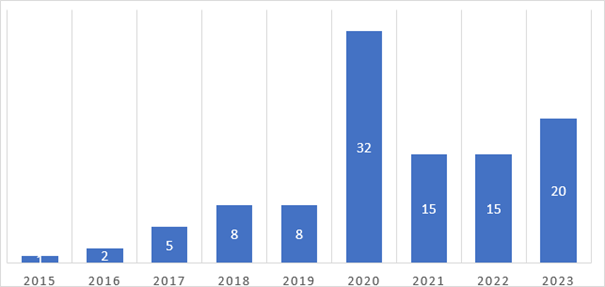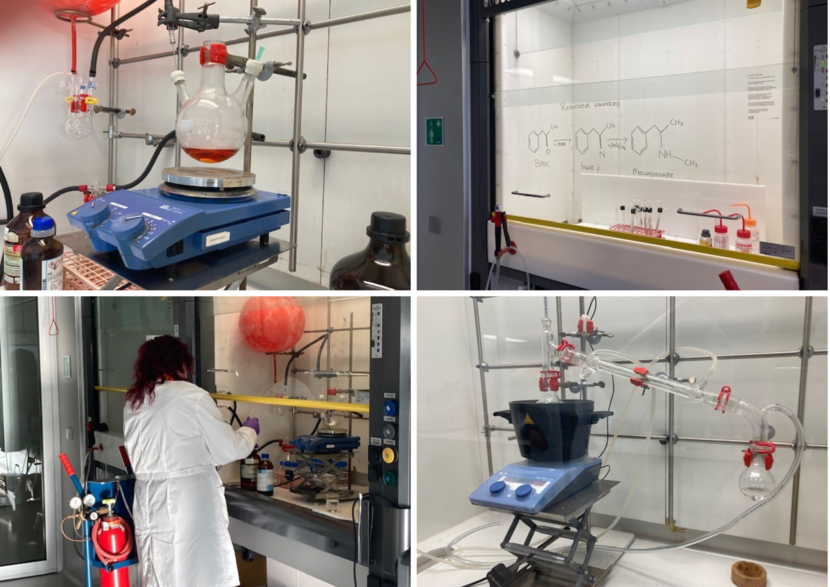Police and NFI investigate proceeds from crystal meth
The court has sentenced a Mexican crystal meth producer, dubbed by the media ‘Pablo Icecobar’, to 15 years in jail. He was involved in several drug labs, including a big one in Moerdijk. It appears that the production of crystal meth (methamphetamine) in the Netherlands has continued to rise since the police discovered his lab in spring 2019. In the first 11 months of this year, 20 production locations for crystal meth have been discovered, compared to 15 in the previous years. This prompted the forensic scientists of the Netherlands Forensic Institute (NFI) to simulate the production processes of crystal meth in their own laboratory. They did so in order to calculate the expected proceeds from different production processes.

The number of crystal meth laboratories discovered in the Netherlands is displaying an upward trend. Whereas in the previous two years, the number stood at 15 production sites, 20 locations have already been dismantled in the first 11 months of 2023. The significant outlier of 2020 (32 locations) is explained by the Encrochat messages, which provided the police with a lot of information.

Calculating criminal proceeds
The NFI records information from the production processes in information sheets for investigative authorities, the Public Prosecution Service, courts and lawyers. “The drug trade often involves cash transactions and many criminals do not keep accounts that can be checked”, says André van Rijn of the police’s National Dismantling Facility (LFO). “When we shut down drug labs, we almost always find empty containers with residues of precursor chemicals. Or we find the precursor chemicals at a location which we can link to the lab. Using the information from the NFI, we can then calculate what has been produced and how much they have earned from it. This is important to know, because we can then confiscate criminal earnings.” Courts use the information sheets in their sentencing, for example in this case involving a drugs location in the eastern Netherlands.
‘Always looking for new precursor chemicals’
Not only is the drug crystal meth now being produced in the Netherlands, criminals also keep changing their production processes – prompting investigative authorities to ask the NFI to analyse the new processes. “New precursor chemicals and new processes mean different proportions and different proceeds”, explains narcotics expert Jorrit van den Berg. The process of prohibiting new precursor chemicals by law was speeded up last year by the Ministry of Justice and Security in order to disrupt the criminal process at an earlier stage. “When it becomes difficult to obtain particular precursor chemicals, criminals have to switch to yet other precursor chemicals”, explains Van den Berg. “Prohibition closes off the easiest and shortest routes, forcing criminals to choose increasingly longer and complex routes. They need to devise and import new precursor chemicals, which they then have to convert into the required materials for drugs themselves.”
Capacity not unlimited
In recent years, the police have noted the occurrence of several new substances for the production of BMK (the precursor for amphetamine and methamphetamine) or PMK (the precursor for MDMA/‘XTC’). Since 2019, they have also been discovering production locations for crystal meth with increasing frequency. When the police find new precursor chemicals or production methods, they like to call in the expertise of the NFI. “The police and the NFI cannot draw on calculations from neighbouring countries”, says Van Rijn. “Unfortunately, the Netherlands is a trendsetter in this area. Our country is a production leader when it comes to drugs.” Currently, the NFI cooks drugs twice a year on average, but the police would prefer the NFI do this for all new precursor chemicals found. “Criminals can earn big money from the production of narcotics. So it is important that we are able to confiscate the proceeds of this crime. Our capacity is not unlimited, so we constantly have to set priorities with the Public Prosecution Service.”
Molecular structure
Van den Berg and his colleagues first analyse new precursor chemicals found by the police using analysis equipment at the NFI. They need to determine the molecular structure of the substanceas well as the recipe used by the criminals. “In most cases, the guys in the lab know nothing about chemistry. They just follow the recipe they’ve been given, which is often the simplest process”, says Janneke Hulshof, like Van den Berg an expert in narcotics. The NFI recreates the suspects’ setup in miniature and then uses it to convert newly discovered precursor chemicals. “Sometimes a precursor is very effective and the conversion generates large proceeds. Other times, criminals devise a precursor chemical that generates smaller proceeds. In that case, there are a lot of byproducts and the proceeds are smaller”, says Hulshof. Is Hulshof a good cook? “Better than at home”, she laughs.
